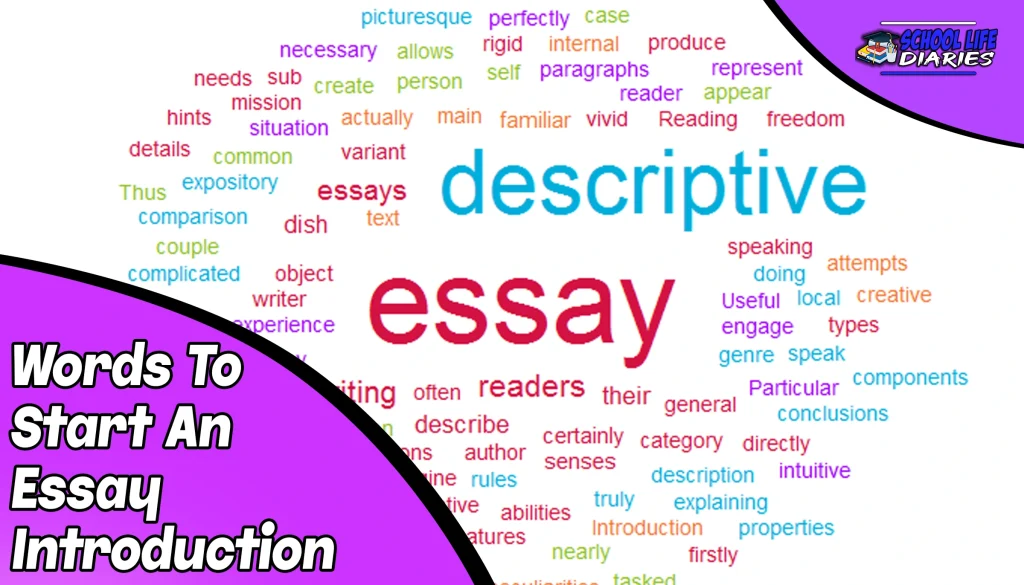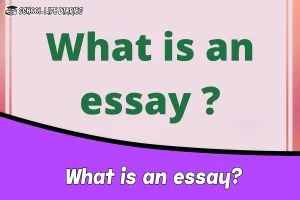In the realm of academic writing, an essay serves as a platform for individuals to express their thoughts and ideas on a particular topic. It is a structured piece of writing that requires careful planning, research, and analysis. One of the most crucial aspects of an essay is its introduction, which sets the tone and provides a roadmap for what lies ahead.
The purpose of an introduction in an essay is twofold: to grab the reader’s attention and to provide them with a clear understanding of what will be discussed throughout the essay. A well-crafted introduction not only entices readers to continue reading but also establishes the credibility and relevance of the writer’s arguments. It should succinctly outline the main points that will be explored in subsequent paragraphs while maintaining a sense of intrigue.
What is an essay?
An essay is a structured piece of writing that presents a coherent argument or analysis on a specific topic. It serves as a platform for individuals to express their thoughts, ideas, and opinions in an organized manner. To understand the concept of an essay better, it is crucial to delve into its definition and explore its various elements. A well-written essay typically consists of an introduction, body paragraphs, and a conclusion.
The structure of an essay plays a significant role in conveying ideas effectively. By organizing thoughts coherently within each paragraph and linking them logically between paragraphs, writers can ensure clarity in their arguments. Additionally, following a clear structure helps readers navigate through the text effortlessly and comprehend the writer’s message more easily.
An essay is not merely a collection of words but rather a carefully constructed piece of writing that aims to inform or persuade readers about a particular subject matter. Understanding different types of essays and adhering to proper essay structure allows writers to present their arguments convincingly while engaging with readers effectively.
How to write an essay?
To effectively convey one’s ideas in a formal academic setting, it is important to understand the essential components and structure of a well-written paper. When it comes to writing an essay, having a clear understanding of its structure is crucial. An essay typically consists of three main parts: the introduction, body paragraphs, and conclusion.
The introduction serves as a roadmap for the reader, providing them with an overview of what will be discussed in the essay. It should grab their attention and engage them right from the start. Effective writing is another key aspect of producing a strong essay. This involves using appropriate language, organizing thoughts coherently, and presenting arguments logically.
Each paragraph within the body of the essay should focus on a single idea or point and support it with evidence or examples. Transition words can be used to smoothly connect these paragraphs and ensure that the reader can follow along easily. Understanding how to write an effective essay requires knowledge of its structure, mastery of effective writing techniques, and engaging strategies to captivate readers’ interest.
What is the purpose of the introduction in an essay?
The introduction of an essay serves as a gateway that invites readers into the realm of ideas, guiding them through a labyrinth of thoughts and igniting their curiosity with its captivating opening. Its purpose is two-fold: to introduce the topic and engage readers from the very beginning. To engage readers and set the tone, the introduction also serves as a guidepost for what lies ahead in the essay. It outlines the main points or arguments that will be explored in subsequent sections, giving readers a roadmap to follow throughout their reading journey.
While serving as an entry point into an essay’s content, an introduction plays a crucial role in engaging readers and establishing a strong foundation for further exploration. By fulfilling its purpose effectively – capturing attention, setting expectations, and guiding readers through complex ideas – it ensures that readers are enthralled from start to finish.
Top 20 Phrases To Start An Essay Introduction
Here are 20 phrases you can use to start an essay introduction and captivate your readers:
- “Have you ever wondered…”
- “In today’s society…”
- “Imagine a world where…”
- “Contrary to popular belief…”
- “It is a well-known fact that…”
- “In the modern era of…”
- “The issue at hand is…”
- “In recent years…”
- “From the dawn of time…”
- “With the advancements in…”
- “According to research…”
- “Picture this…”
- “In the realm of…”
- “As a society, we must…”
- “To truly understand…”
- “One of the most significant issues facing us today…”
- “It all began when…”
- “In this ever-changing world…”
- “As we navigate through…”
- “Deep within the core of…”
These phrases are designed to intrigue and engage your audience right from the start, setting the stage for an impactful and compelling essay. Choose the one that fits your topic and style best!
Can I revise the introduction after completing the essay?
Revising the introduction of an essay is a common practice once the main body of the essay has been completed. This is because during the process of writing, ideas, and arguments may evolve, requiring adjustments in the initial approach presented in the introduction. The revision process allows writers to refine their ideas, strengthen their arguments, and ensure that the introduction accurately reflects the content and direction of the essay.
One important aspect of revising the introduction is editing for clarity and coherence. By carefully reviewing each sentence and paragraph, writers can identify any areas where their ideas may be unclear or confusing to readers. This ensures that the introduction effectively sets up the main points and thesis statement of the essay, providing a clear roadmap for readers to follow.
How can I transition smoothly from the introduction to the body paragraphs?
To establish a seamless transition from the introduction to the body paragraphs, a logical progression of ideas can be visually represented through a gradual shift from broad contextual information to specific arguments and evidence. Transition techniques play a crucial role in achieving this smooth transition.
One effective technique is using transitional words and phrases that connect ideas and help guide the reader from one point to another. Examples of such words include ‘moreover,’ ‘in addition,’ and ‘furthermore,’ which signal that new supporting points or evidence are being introduced. By incorporating these transitional elements, the essay becomes more cohesive, allowing for the development of a clear and organized argument
Transitioning smoothly from the introduction to the body paragraphs requires careful attention to detail and the strategic use of transition techniques such as transitional words and phrases.
Conclusion
In crafting an essay, the introduction emerges as a vital portal through which readers are ushered into a world of ideas and arguments. Its twofold purpose is to introduce the topic and enthrall readers from the outset. The introduction serves as a guide, offering a preview of the key points to be explored in the subsequent essay, thus setting clear expectations for readers. Effective introductions arrest attention, set the stage, and guide readers through the maze of complex ideas, ensuring their engagement from start to finish.
The journey of writing an essay often involves revising the introduction after the body has taken shape. This is a natural and recommended practice, as the trajectory of ideas may shift during the writing process. A well-crafted introduction aligns seamlessly with the final content, ensuring a cohesive and coherent essay. Attention to clarity and coherence during the revision process solidifies the essay’s foundation, enhancing its overall impact.
In academic writing, the objective is to present arguments and evidence impartially. The use of personal pronouns is eschewed to maintain a formal and objective tone. This stylistic choice engenders credibility and elevates the professionalism of the work. In essence, the art of essay writing is a blend of structure, language, and precision. The introduction, as the gateway to the essay’s universe, beckons readers with tantalizing phrases, setting the stage for an intellectual exploration.









